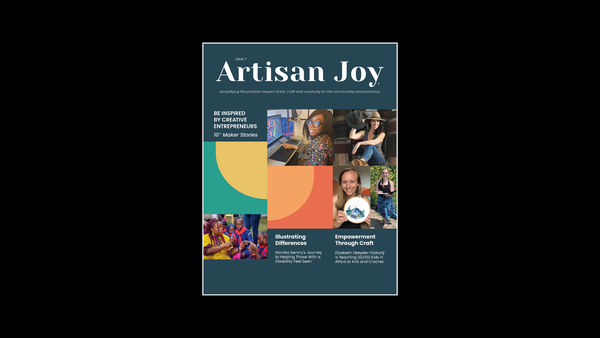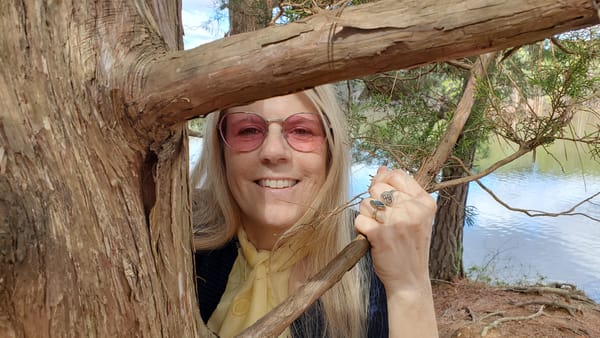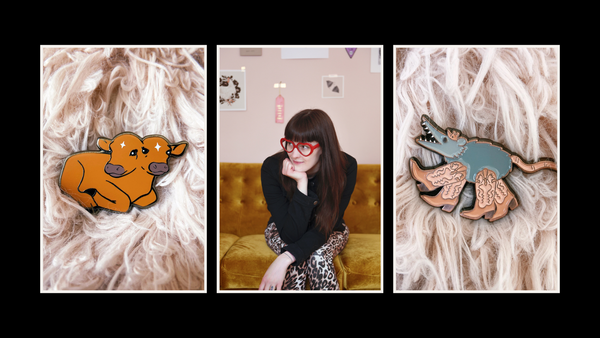Fusing Art and Fashion to Build a Thriving Handbag Business
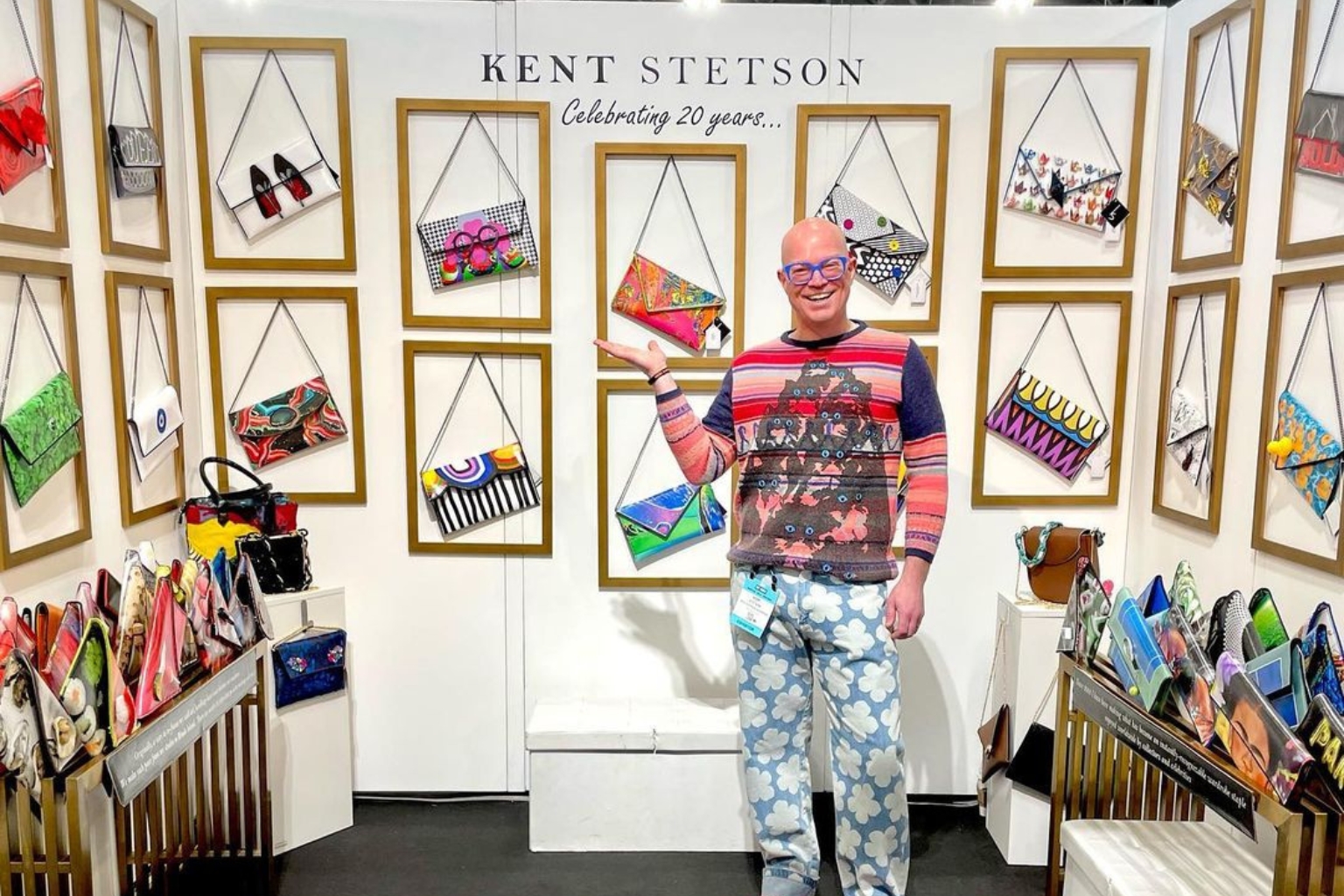
A Conversation with Kent Stetson
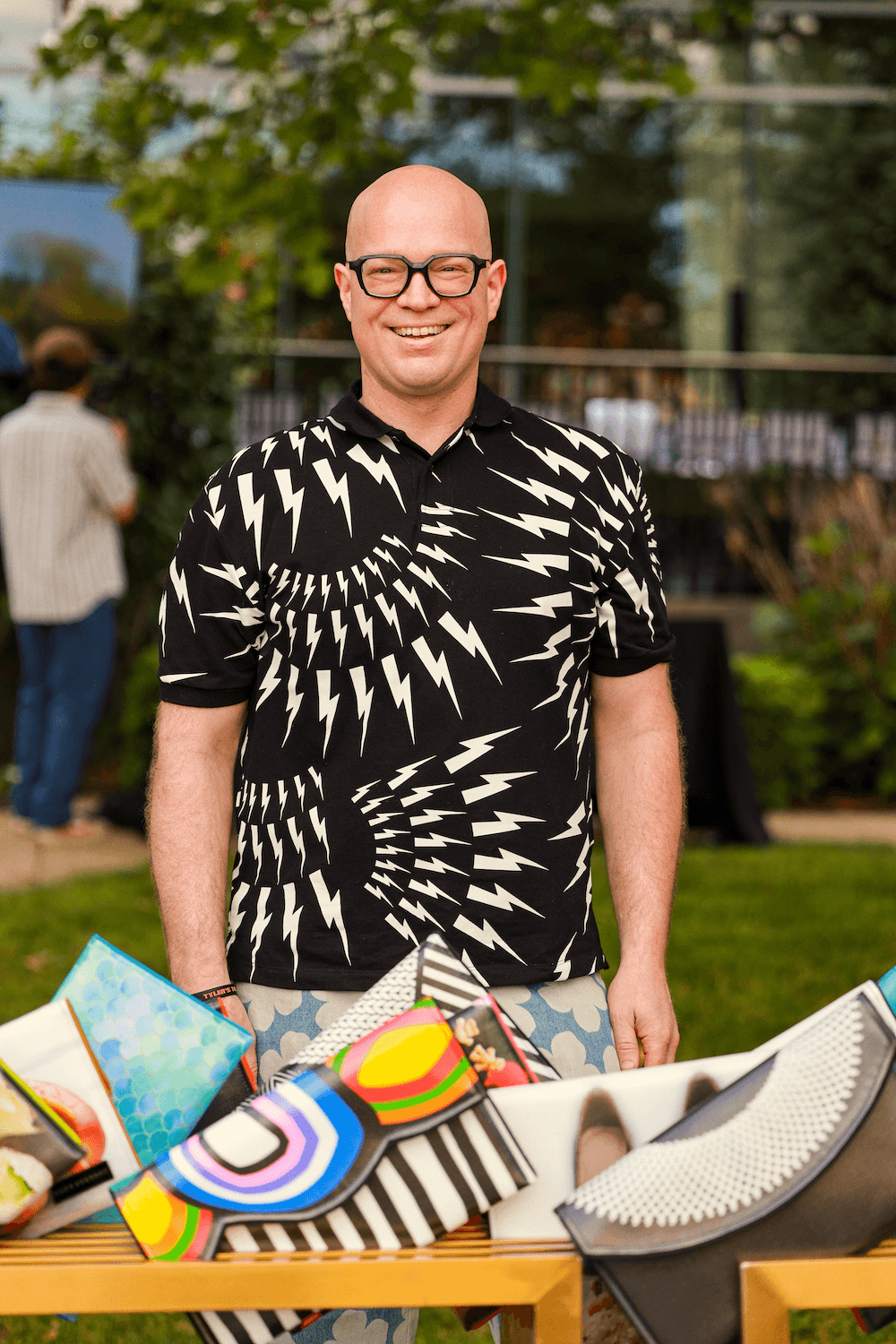
This year, Kent Stetson, an artisan handbag designer, is celebrating two decades of creative entrepreneurship. His niche is handcrafted handbags that double as art. Initially, the artist explored selling his paintings, but the endeavor wasn’t for him. Here, Kent shares why he cut up his paintings and started sewing them into bags and how he hustled for years to build his business that now employs five. Kent’s fun and vibrant designs spark instant conversations and have caught the attention of national brands, celebrities and fashionistas.
A little background—I met Kent in 2012 at StyleWeek, a New England fashion event, and have kept tabs on his business over the years through social media and at events. I hope you find his interview as inspiring as I do.

What did you study in college?
I went to Brown University, planning to go to medical school with a degree in philosophy and some studio art classes to keep my creativity flowing. Short of taking the MCAT, I finished all the prerequisites to apply to medical school and completed my degree requirements for the philosophy and studio art programs. Early on, I had some DaVincian visions of creating artworks and innovations. I haven’t changed my course all that much as making my ambitions more modest.
When did you realize you wanted to pursue art as a career?
I don’t think there was ever a time when I didn’t visualize my future being inextricably connected with some form of creativity.
Tell us how Kent Stetson Handbags began.
From an early age, I got a lot of recognition from peers and adults for my creativity and crafting. Throughout high school and college, I excelled in applying ambition and scale to my art projects, and my grades in these courses regularly came with notes of distinction on my transcript. As is regularly the case, I walked out with my diploma and had no sense of how to turn the creativity into cash flow. I mimicked the business model I thought turned student artists into having a career as a visual artist: making a grouping of works and staging them in a setting where someone else would sell them. I got whatever venues I could convince to hang my works, like cafes and galleries, lined up press and organized invitations. People came, a couple pieces would sell, and the events would come down, and I would still be working my retail job and squeezing other lemons to pay for these showings.
At one particular rowdy restaurant showing shortly out of school, a large piece mounted on plywood fell off the wall and bonked someone on the head. I got a call the following morning from the owner telling me there was a personal injury lawsuit coming my way. In the end, it was a nothing-burger, but it rattled me up a bit and took the allure of staging shows down a couple pegs for me. Working in retail, I was engaged in a low-risk transactional model that just needed the right type of appealing commercial product to sustain itself. I found selling shoes and personal accessories to be fun and unpretentious, and this suited my strengths in business. The universe was giving me signs that changing the framing of my work would allow for me to take away some of the liability and cater to my strengths of having fun interactions leading up to selling directly to the end-users.
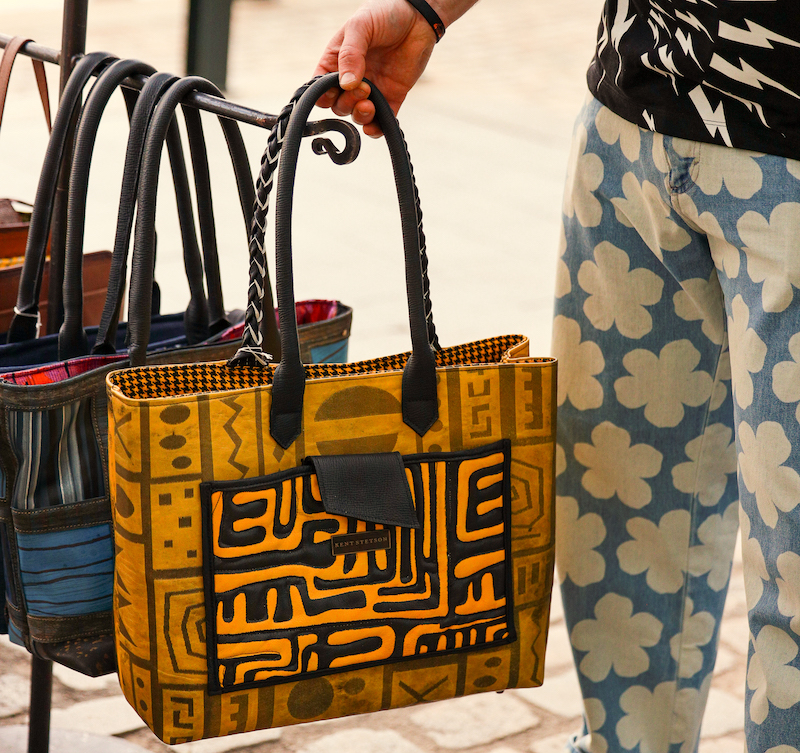
What inspired you to explore handbags as a medium?
I was selling expensive boutique and name-brand handbags in the shoe store where I worked and understood how passionate people were about bags, even more so than shoes and apparel. There was a line of extremely expensive handmade bags that were essentially craft store items hot glued onto made-in-China plain handbag forms and another line of classic and contemporary artworks printed onto leathers that were constructed into various bag forms. I took to my own creative and crafting skills and started making my own unique interpretations of art-to-wear handbags that would stand up alongside these other brands while also being distinct.

What pushed you to continue your creative business?
I had a job working sales in a shoe store, and every time I sold one of my repurposed artwork handbags, it was how I earned my bonus. Affirmations, both transactionally and through encouragements, kept me moving. I would make a piece, and it would sell, unlike my wall pieces which were accumulating and taking up space in my small living quarters.
At what point did you decide to go full-time with Kent Stetson Handbags?
I first put my name on a purse in 2003 and worked full-time doing other jobs for eight years before going full-time.

How do you handle the highs and lows of running a business?
I fill my calendar when something disappoints—I’ve already got the next thing ahead to focus on. I just keep moving forward. I realized early on that I’m not an event planner—filling a room is not my passion, so I leave that to other people, but taking a little real estate on the shelf in a boutique or set up at a marketplace, I have earned a great track record of success.
What is your advice to someone who wants to pursue art as a career but is hesitant?
Figure out your finances and budget. Short of raising investment capital, I don’t know anyone who is profitable in a startup for the first several years. Sort that out, and then you can start to think about marrying your financial plan and your career goals.
On our call, you mentioned something to the effect of – some people pursue art as a career while others do something else for their livelihood, and either way works. Can you elaborate?
If the reality of conjoining a financial plan and your creative practice is implausible or stifling, don’t take it to mean you are not an artist. Quite the opposite is probably true. Capitalism is not the appropriate spouse for many types of creative pursuits. Making art that is unattached to money is beautiful, noble and a worthy pursuit.

You’re extraordinarily supportive of other artisans. Why is mentoring important to you?
As a creative who is already well into my career, I find it is so helpful to be around people who are wide-eyed, hopeful and enthusiastic about their futures. These are really attractive qualities for people throughout their careers, but they are often purer in their nascency. Customer service is a constant ego-check, and I don’t want my heart to harden with scar tissue from every bump and bruise along the way, offering some guidance or mentorship in exchange for the opportunity to spend time with enthusiastic artists is good for my heart.
What brings you joy?
When I’m working on something, be it physical or in the planning stages, and I feel excited, or after finishing a piece and stepping back and enjoying it wholly, everything in the periphery sort of fading. It’s a feeling of being in new love, and for me, occupying a state of passion is a pure joy.
Thanks, Kent! You can shop Kent Stetson Handbags at www.kentstetson.com.
Editor’s Note: Article images updated on 3/12/24.

